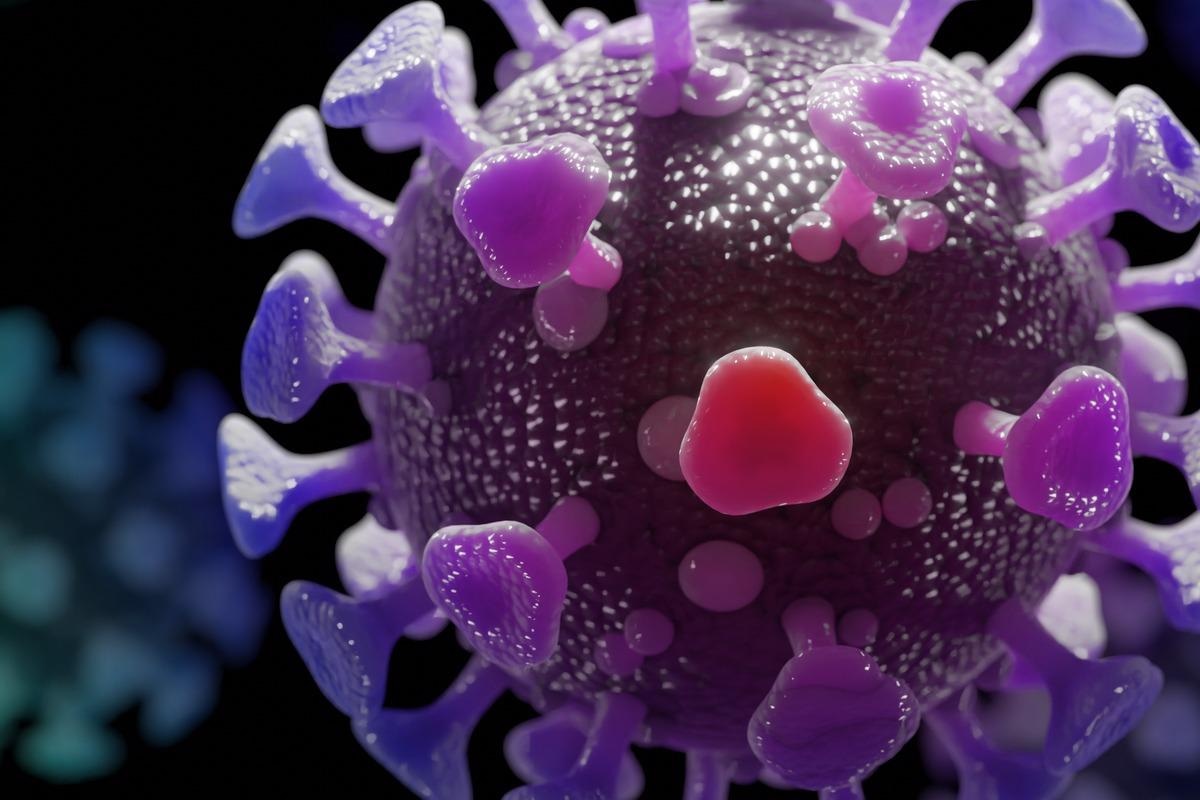In a recent analysis, researchers investigated the formation of amyloid fibrils in coronavirus disease 2019 (COVID-19) patients and posted their results to the bioRxiv* preprint server.
The world is witnessing a massive surge in severe acute respiratory syndrome coronavirus 2 (SARS-CoV-2) cases with over 270 million reported cases to date. Several coronaviruses (OC43, 229E, NL63, HKU1) are known to infect humans causing respiratory disorders; however, COVID-19 has been found to affect multiple organ systems causing extra-respiratory tract complications such as heart failure, peripheral neuropathy, central nervous system (CNS) disorders, and blood coagulation.
 Study: Amyloidogenesis of SARS-CoV-2 Spike Protein. Image Credit: Dotted Yeti/Shutterstock
Study: Amyloidogenesis of SARS-CoV-2 Spike Protein. Image Credit: Dotted Yeti/Shutterstock
The study

 This news article was a review of a preliminary scientific report that had not undergone peer-review at the time of publication. Since its initial publication, the scientific report has now been peer reviewed and accepted for publication in a Scientific Journal. Links to the preliminary and peer-reviewed reports are available in the Sources section at the bottom of this article. View Sources
This news article was a review of a preliminary scientific report that had not undergone peer-review at the time of publication. Since its initial publication, the scientific report has now been peer reviewed and accepted for publication in a Scientific Journal. Links to the preliminary and peer-reviewed reports are available in the Sources section at the bottom of this article. View Sources
In the present study, researchers investigated if the SARS-CoV-2 S protein could cause amyloidosis. Coronaviruses use their surface spike (S) protein to attach with host cells. About 316 spike peptides (15-mers with 11 amino acid [aa] overlap) were screened initially in two equal sub-pools and assayed in vitro for amyloid fibril formation.
Further, they generated 20 aa peptide sequences to find the most amyloidogenic sequences by using the WALTZ prediction algorithm. The peptides were lyophilized and dissolved in hexafluoroisopropanol (HFIP), followed by dilution in PBS buffer. They were maintained at a concentration of 0.1 mg/ml (10% HFIP) and observed for the formation of amyloid fibrils in vitro. The formation kinetics was monitored using Thioflavin T (ThT), Congo red birefringence (CR), and negative stain transmission electron microscopy (TEM).
Findings
The team discovered seven synthetic (amyloidogenic) peptides which were 20 amino acids in length within the S protein and found that six of them were in beta-sheet conformation as observed in the cryo-EM structure of SARS-CoV-2 S protein in its closed state. It was noted that these peptides in isolation could aggregate as fibrils at 37°C during incubation. Of these seven peptides, three peptides were found to meet the criteria of amyloid fibrils: sigmoid ThT kinetics, congophilicity, and ultrastructural fibrillar morphology. These peptides were Spike191, Spike532, and Spike1165, which are named according to the starting position of the S-protein.
Further, the researchers analyzed the fibril formation with these seven peptides as a mixture resulting in sigmoidal ThT kinetics based on a nucleation-dependent mechanism and noticed that the fibril morphology was similar to that of Spike191 indicating that this peptide was dominant in the mixture.
It is known that proteolysis of precursor proteins initiates amyloid formation in several diseases like Alzheimer’s disease, British and Danish dementia, and Finnish amyloidosis. The S protein of SARS-CoV-2 is also reported to be proteolyzed in hosts as an immune response and therefore, to understand the plausible mechanism of fibril formation, the full-length S protein was cleaved in vitro by using the enzyme, neutrophil elastase (NE). NE, secreted by neutrophils, was selected after positive results of in silico proteolysis of S protein were obtained. The analysis revealed that full-length S protein can not form fibrils and neither could NE alone; however, co-incubation of the two proteins formed fibrils indicative of proteolytic cleavage by NE that resulted in a Spike191-like peptide.
Conclusion
The findings reported in the study provide an understanding of amyloidosis observed in COVID-19 patients. COVID-19 induces multifactorial and complex pathogenesis like acute respiratory distress syndrome (ARDS) from several inflammatory reactions of the innate immune system. Cytokine storm, cardiac, neural, and renal damage have also been reported due to COVID-19.
Several studies observed blood coagulation in COVID-19 patients due to aggregation of extracellular amyloid fibrils.
Furthermore, it has been reported that NE is overexpressed at sites of inflammation and vaccine administration. Globally, over eight billion COVID-19 vaccine doses have been administered so far and a majority of them are mRNA-based vaccines that deliver information to encode the SARS-CoV-2 S protein as the main antigen. Recently, the formation of fibrils was noted in a human at the site of mRNA-vaccine injection and in lymph nodes within 24 hours of administration.
The findings observed that endoproteolysis of S protein by NE, which generates peptides such as 193-202 segment, and possibly other amyloidogenic segments by other proteases could form amyloid fibrils. Complications like fibrinolysis, blood clotting, cerebral amyloid angiopathy, FXII Kallikrein/Kinin activation, and thromboinflammation have been linked with amyloidosis which could suggest a possible link between COVID-19 phenotypes and amyloidogenesis of S-protein.
In conclusion, the authors proposed that inflammation combined with aggregates of amyloidogenic peptides of SARS-CoV-2 S proteins might induce systemic amyloidosis.

 This news article was a review of a preliminary scientific report that had not undergone peer-review at the time of publication. Since its initial publication, the scientific report has now been peer reviewed and accepted for publication in a Scientific Journal. Links to the preliminary and peer-reviewed reports are available in the Sources section at the bottom of this article. View Sources
This news article was a review of a preliminary scientific report that had not undergone peer-review at the time of publication. Since its initial publication, the scientific report has now been peer reviewed and accepted for publication in a Scientific Journal. Links to the preliminary and peer-reviewed reports are available in the Sources section at the bottom of this article. View Sources